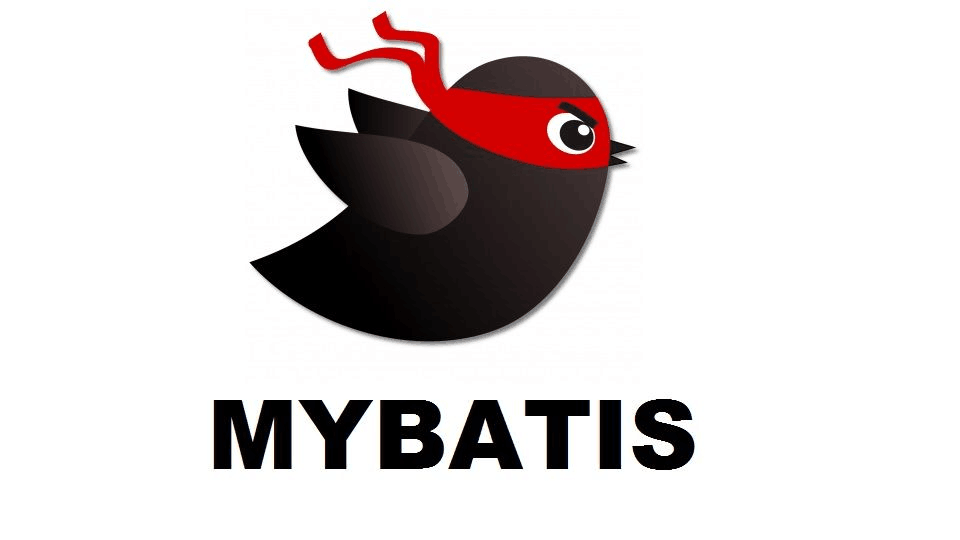一、MyBatis 简介 1. MyBatis 历史 MyBatis 最初是 Apache 的一个开源项目 iBatis, 2010 年 6 月这个项目由 Apache Software Foundation 迁 移到了 Google Code。随着开发团队转投 Google Code 旗下, iBatis3.x 正式更名为 MyBatis。代码于 2013 年 11 月迁移到 Github。
iBatis 一词来源于“internet”和“abatis”的组合,是一个基于 Java 的持久层框架。 iBatis 提供的持久层框架 包括 SQL Maps 和 Data Access Objects(DAO)。
2. MyBatis 特性 1) MyBatis 是支持定制化 SQL、存储过程以及高级映射的优秀的持久层框架
2) MyBatis 避免了几乎所有的 JDBC 代码和手动设置参数以及获取结果集
3) MyBatis 可以使用简单的 XML 或注解用于配置和原始映射,将接口和 Java 的 POJO(Plain Old Java Objects,普通的 Java 对象)映射成数据库中的记录
4) MyBatis 是一个 半自动的 ORM(Object Relation Mapping)框架
3. MyBatis 下载 点我下载 4. 和其它持久化层技术对比 JDBCSQL 夹杂在 Java 代码中耦合度高,导致硬编码内伤 维护不易且实际开发需求中 SQL 有变化,频繁修改的情况多见 代码冗长,开发效率低 Hibernate 和 JPA操作简便,开发效率高 程序中的长难复杂 SQL 需要绕过框架 内部自动生产的 SQL,不容易做特殊优化 基于全映射的全自动框架,大量字段的 POJO 进行部分映射时比较困难 反射操作太多,导致数据库性能下降 MyBatis轻量级,性能出色 SQL 和 Java 编码分开,功能边界清晰。Java 代码专注业务、SQL 语句专注数据 开发效率稍逊于 HIbernate,但是完全能够接受 二、搭建 MyBatis 1. 开发环境 IDE:idea 2019.2
构建工具:maven 3.5.4
MySQL 版本:MySQL 5.7
MyBatis 版本:MyBatis 3.5.7
2. 创建 maven 工程 a>打包方式:jar
b>引入依赖
1 2 3 4 5 6 7 8 9 10 11 12 13 14 15 16 17 18 19 20 21 <dependencies > <dependency > <groupId > org.mybatis</groupId > <artifactId > mybatis</artifactId > <version > 3.5.7</version > </dependency > <dependency > <groupId > junit</groupId > <artifactId > junit</artifactId > <version > 4.12</version > <scope > test</scope > </dependency > <dependency > <groupId > mysql</groupId > <artifactId > mysql-connector-java</artifactId > <version > 5.1.3</version > </dependency > </dependencies > 将来整合Spring 之后,这个配置文件可以省略,所以大家操作时可以直接复制、粘贴, 核心配置文件主要用于配置连接数据库的环境以及MyBatis的全局配置信息
3. 创建 MyBatis 的核心配置文件 习惯上命名为 1 2 3 4 5 6 7 8 9 10 11 12 13 14 15 16 17 18 19 20 21 22 23 <?xml version="1.0" encoding="UTF-8" ?> <!DOCTYPE configuration PUBLIC "-//mybatis.org//DTD Config 3.0//EN" "http://mybatis.org/dtd/mybatis-3-config.dtd" ><configuration > <environments default ="development" > <environment id ="development" > <transactionManager type ="JDBC" /> <dataSource type ="POOLED" > <property name ="driver" value ="com.mysql.jdbc.Driver" /> <property name ="url" value ="jdbc:mysql://localhost:3306/MyBatis" /> <property name ="username" value ="root" /> <property name ="password" value ="123456" /> </dataSource > </environment > </environments > <mappers > <mapper resource ="mappers/UserMapper.xml" /> </mappers > </configuration >
4、创建 mapper 接口 MyBatis 中的 mapper 接口相当于以前的 dao。但是区别在于,mapper 仅仅是接口,我们不需要 提供实现类。
1 2 3 4 5 6 public interface UserMapper { int insertUser () ; }
5、创建 MyBatis 的映射文件 相关概念:ORM(Object Relationship Mapping)对象关系映射。
对象:Java 的实体类对象 关系:关系型数据库 映射:二者之间的对应关系 Java 概念 数据库概念 类 表 属性 字段/列 对象 记录/行
1、映射文件的命名规则: 表所对应的实体类的类名+Mapper.xml 例如:表 t_user,映射的实体类为 User,所对应的映射文件为 UserMapper.xml 因此一个映射文件对应一个实体类,对应一张表的操作 MyBatis 映射文件用于编写 SQL,访问以及操作表中的数据 MyBatis 映射文件存放的位置是 src/main/resources/mappers 目录下
2、MyBatis 中可以面向接口操作数据,要保证两个一致: a>mapper 接口的全类名和映射文件的命名空间(namespace)保持一致 b>mapper 接口中方法的方法名和映射文件中编写 SQL 的标签的 id 属性保持一致
1 2 3 4 5 6 7 8 9 10 <?xml version="1.0" encoding="UTF-8" ?> <!DOCTYPE mapper PUBLIC "-//mybatis.org//DTD Mapper 3.0//EN" "http://mybatis.org/dtd/mybatis-3-mapper.dtd" ><mapper namespace ="com.atguigu.mybatis.mapper.UserMapper" > <insert id ="insertUser" > insert into t_user values(null,'张三','123',23,'女') </insert > </mapper >
6、通过 junit 测试功能 1 2 3 4 5 6 7 8 9 10 11 12 13 14 15 16 17 18 InputStream is = Resources.getResourceAsStream("mybatis-config.xml" );SqlSessionFactoryBuilder sqlSessionFactoryBuilder = new SqlSessionFactoryBuilder ();SqlSessionFactory sqlSessionFactory = sqlSessionFactoryBuilder.build(is);SqlSession sqlSession = sqlSessionFactory.openSession(true );UserMapper userMapper = sqlSession.getMapper(UserMapper.class);映射文件中的SQL标签,并执行标签中的SQL语句 int result = userMapper.insertUser();System.out.println("结果:" +result);
SqlSession:代表 Java 程序和数据库之间的会话。(HttpSession 是 Java 程序和浏览器之间的 会话) SqlSessionFactory:是“生产”SqlSession 的“工厂”。 工厂模式:如果创建某一个对象,使用的过程基本固定,那么我们就可以把创建这个对象的 相关代码封装到一个“工厂类”中,以后都使用这个工厂类来“生产”我们需要的对象。 7、加入 log4j 日志功能 a>加入依赖 1 2 3 4 5 6 <dependency > <groupId > log4j</groupId > <artifactId > log4j</artifactId > <version > 1.2.17</version > </dependency >
b>加入 log4j 的配置文件 log4j的配置文件名为log4j.xml,存放的位置是src/main/resources目录下 1 2 3 4 5 6 7 8 9 10 11 12 13 14 15 16 17 18 19 20 21 <?xml version="1.0" encoding="UTF-8" ?> <!DOCTYPE log4j :configuration SYSTEM "log4j.dtd" > <log4j:configuration xmlns:log4j ="http://jakarta.apache.org/log4j/" > <appender name ="STDOUT" class ="org.apache.log4j.ConsoleAppender" > <param name ="Encoding" value ="UTF-8" /> <layout class ="org.apache.log4j.PatternLayout" > <param name ="ConversionPattern" value ="%-5p %d{MM-dd HH:mm:ss,SSS} %m (%F:%L) \n" /></layout > </appender > <logger name ="java.sql" > <level value ="debug" /> </logger > <logger name ="org.apache.ibatis" > <level value ="info" /> </logger > <root > <level value ="debug" /> <appender-ref ref ="STDOUT" /> </root > </log4j:configuration >
日志的级别 FATAL(致命)>ERROR(错误)>WARN(警告)>INFO(信息)>DEBUG(调试) 三、核心配置文件详解 核心配置文件中的标签必须按照固定的顺序:
==properties?,settings?,typeAliases?,typeHandlers?,objectFactory?,objectWrapperFactory?,reflectorF actory?,plugins?,environments?,databaseIdProvider?,mappers?==
1 2 3 4 5 6 7 8 9 10 11 12 13 14 15 16 17 18 19 20 21 22 23 24 25 26 27 28 29 30 31 32 33 34 35 36 37 38 39 40 41 42 43 44 45 46 47 48 49 50 51 52 53 54 55 56 57 58 59 60 61 62 63 64 65 66 67 68 69 70 71 72 73 74 75 76 77 78 79 80 81 82 83 <?xml version="1.0" encoding="UTF-8" ?> <!DOCTYPE configuration PUBLIC "-//MyBatis.org//DTD Config 3.0//EN" "http://MyBatis.org/dtd/MyBatis-3-config.dtd" ><configuration > <properties resource ="jdbc.properties" > </properties > <settings > <setting name ="mapUnderscoreToCamelCase" value ="true" /> <setting name ="lazyLoadingEnabled" value ="true" /> </settings > <typeAliases > <package name ="com.atguigu.mybatis.bean" /> </typeAliases > <environments default ="mysql_test" > <environment id ="mysql_test" > <transactionManager type ="JDBC" /> <dataSource type ="POOLED" > <property name ="driver" value ="${jdbc.driver}" /> <property name ="url" value ="${jdbc.url}" /> <property name ="username" value ="${jdbc.username}" /> <property name ="password" value ="${jdbc.password}" /> </dataSource > </environment > </environments > <mappers > <mapper resource ="UserMapper.xml" /> <package name ="com.atguigu.mybatis.mapper" /> </mappers > </configuration >
四、MyBatis 的增删改查 1、添加 1 2 3 4 <insert id ="insertUser" > insert into t_user values(null,'admin','123456',23,'男') </insert >
2、删除 1 2 3 4 <delete id ="deleteUser" > delete from t_user where id = 7 </delete >
3、修改 1 2 3 4 <update id ="updateUser" > update t_user set username='ybc',password='123' where id = 6 </update
4、查询一个实体类对象 1 2 3 4 <select id ="getUserById" resultType ="com.atguigu.mybatis.bean.User" > select * from t_user where id = 2 </select >
5、查询集合 1 2 3 4 <select id ="getUserList" resultType ="com.atguigu.mybatis.bean.User" > select * from t_user </select >
注意:
1、查询的标签 select 必须设置属性 resultType 或 resultMap,用于设置实体类和数据库表的映射关系
resultType:自动映射,用于属性名和表中字段名一致的情况
resultMap:自定义映射,用于一对多或多对一或字段名和属性名不一致的情况
2、当查询的数据为多条时,不能使用实体类作为返回值,只能使用集合,否则会抛出异常 TooManyResultsException;但是若查询的数据只有一条,可以使用实体类或集合作为返回值
五、MyBatis 获取参数值的两种方式(重点) MyBatis 获取参数值的两种方式:${}和#{}
${}的本质就是字符串拼接,#{}的本质就是占位符赋值
${}使用字符串拼接的方式拼接 sql,若为字符串类型或日期类型的字段进行赋值时,需要手动加单引 号;但是#{}使用占位符赋值的方式拼接 sql,此时为字符串类型或日期类型的字段进行赋值时,可以自 动添加单引号
1、单个字面量类型的参数 若 mapper 接口中的方法参数为单个的字面量类型 此时可以使用${}和#{}以任意的名称获取参数的值,注意${}需要手动加单引号
2、多个字面量类型的参数 若 mapper 接口中的方法参数为多个时 此时 MyBatis 会自动将这些参数放在一个 map 集合中,以 arg0,arg1…为键,以参数为值;以 param1,param2…为键,以参数为值;因此只需要通过${}和#{}访问map集合的键就可以获取相对应的 值,注意${}需要手动加单引号
3、map 集合类型的参数 若 mapper 接口中的方法需要的参数为多个时,此时可以手动创建 map 集合,将这些数据放在 map 中 只需要通过${}和#{}访问map集合的键就可以获取相对应的值,注意${}需要手动加单引号
4、实体类类型的参数 若 mapper 接口中的方法参数为实体类对象时 此时可以使用${}和#{},通过访问实体类对象中的属性名获取属性值,注意${}需要手动加单引号
5、使用@Param 标识参数 可以通过@Param 注解标识 mapper 接口中的方法参数
此时,会将这些参数放在 map 集合中,以@Param 注解的 value 属性值为键,以参数为值;以 param1,param2…为键,以参数为值;只需要通过${}和#{}访问map集合的键就可以获取相对应的值, 注意${}需要手动加单引号
六、MyBatis 的各种查询功能 1、查询一个实体类对象 1 2 3 4 5 6 User getUserById (@Param("id") int id) ;
1 2 3 4 <select id ="getUserById" resultType ="User" > select * from t_user where id = #{id} </select >
2、查询一个 list 集合 1 2 3 4 5 List<User> getUserList () ;
1 2 3 4 <select id ="getUserList" resultType ="User" > select * from t_user </select >
3、查询单个数据 1 2 3 4 <select id ="getCount" resultType ="_integer" > select count(id) from t_user </select >
4、查询一条数据为 map 集合 1 2 3 4 5 6 Map<String, Object> getUserToMap (@Param("id") int id) ;
1 2 3 4 5 6 <select id ="getUserToMap" resultType ="map" > select * from t_user where id = #{id} </select >
5、查询多条数据为 map 集合 方式一: 1 2 3 4 5 6 7 List<Map<String, Object>> getAllUserToMap () ;
1 2 3 4 5 6 7 /** * 查询所有用户信息为map集合 * @return * 将表中的数据以map集合的方式查询,一条数据对应一个map;若有多条数据,就会产生多个map集合,此 时可以将这些map放在一个list集合中获取 */ List<Map<String, Object>> getAllUserToMap();
方式二: 1 2 3 4 5 6 7 8 9 @MapKey("id") Map<String, Object> getAllUserToMap () ;
1 2 3 4 5 6 7 8 9 10 11 12 <select id ="getAllUserToMap" resultType ="map" > select * from t_user </select > 结果:
七、特殊 SQL 的执行 1、模糊查询 1 2 3 4 5 6 7 8 9 10 11 12 13 List<User> testMohu (@Param("mohu") String mohu) ; <!--List<User> testMohu (@Param("mohu") String mohu) ;--> <select id="testMohu" resultType="User" > <!--select * from t_user where username like '%${mohu}%' --> <!--select * from t_user where username like concat ('%' ,#{mohu},'%' ) --> select * from t_user where username like "%" #{mohu}"%" </select>
2、批量删除 1 2 3 4 5 6 7 8 9 10 /** * 批量删除 * @param ids * @return */ int deleteMore(@Param("ids") String ids); <delete id ="deleteMore" > delete from t_user where id in (${ids}) </delete >
3、动态设置表名 1 2 3 4 5 6 List<User> getAllUser (@Param("tableName") String tableName) ;
1 2 3 4 <select id ="getAllUser" resultType ="User" > select * from ${tableName} </select >
4、添加功能获取自增的主键 t_clazz(clazz_id,clazz_name)
t_student(student_id,student_name,clazz_id)
1、添加班级信息
2、获取新添加的班级的 id
3、为班级分配学生,即将某学的班级 id 修改为新添加的班级的 id
1 2 3 4 5 6 7 8 9 int insertUser (User user) ;
1 2 3 4 <insert id ="insertUser" useGeneratedKeys ="true" keyProperty ="id" > insert into t_user values(null,#{username},#{password},#{age},#{sex}) </insert >
八、自定义映射 resultMap 1、resultMap 处理字段和属性的映射关系 若字段名和实体类中的属性名不一致,则可以通过 resultMap 设置自定义映射
1 2 3 4 5 6 7 8 9 10 11 12 13 14 15 16 17 18 19 20 21 22 23 24 25 26 27 <resultMap id ="userMap" type ="User" > <id property ="id" column ="id" > </id > <result property ="userName" column ="user_name" > </result > <result property ="password" column ="password" > </result > <result property ="age" column ="age" > </result > <result property ="sex" column ="sex" > </result > </resultMap > <select id ="testMohu" resultMap ="userMap" > select id,user_name,password,age,sex from t_user where user_name like concat('%',#{mohu},'%') </select >
若字段名和实体类中的属性名不一致,但是字段名符合数据库的规则(使用),实体类中的属性 名符合 Java 的规则(使用驼峰)
此时也可通过以下两种方式处理字段名和实体类中的属性的映射关系
a>可以通过为字段起别名的方式,保证和实体类中的属性名保持一致
b>可以在 MyBatis 的核心配置文件中设置一个全局配置信息 mapUnderscoreToCamelCase,可 以在查询表中数据时,自动将_类型的字段名转换为驼峰
例如:字段名 user_name,设置了 mapUnderscoreToCamelCase,此时字段名就会转换为 userName
2、多对一映射处理 查询员工信息以及员工所对应的部门信息
a>级联方式处理映射关系 1 2 3 4 5 6 7 8 9 10 11 12 13 <resultMap id ="empDeptMap" type ="Emp" > <id column ="eid" property ="eid" > </id > <result column ="ename" property ="ename" > </result > <result column ="age" property ="age" > </result > <result column ="sex" property ="sex" > </result > <result column ="did" property ="dept.did" > </result > <result column ="dname" property ="dept.dname" > </result > </resultMap > <select id ="getEmpAndDeptByEid" resultMap ="empDeptMap" > select emp.*,dept.* from t_emp emp left join t_dept dept on emp.did = dept.did where emp.eid = #{eid} </select >
b>使用 association 处理映射关系 1 2 3 4 5 6 7 8 9 10 11 12 13 14 15 <resultMap id ="empDeptMap" type ="Emp" > <id column ="eid" property ="eid" > </id > <result column ="ename" property ="ename" > </result > <result column ="age" property ="age" > </result > <result column ="sex" property ="sex" > </result > <association property ="dept" javaType ="Dept" > <id column ="did" property ="did" > </id > <result column ="dname" property ="dname" > </result > </association > </resultMap > <select id ="getEmpAndDeptByEid" resultMap ="empDeptMap" > select emp.*,dept.* from t_emp emp left join t_dept dept on emp.did = dept.did where emp.eid = #{eid} </select >
c>分步查询 1)查询员工信息 1 2 3 4 5 6 Emp getEmpByStep (@Param("eid") int eid) ;
1 2 3 4 5 6 7 8 9 10 11 12 13 14 15 16 17 <resultMap id ="empDeptStepMap" type ="Emp" > <id column ="eid" property ="eid" > </id > <result column ="ename" property ="ename" > </result > <result column ="age" property ="age" > </result > <result column ="sex" property ="sex" > </result > <association property ="dept" select ="com.atguigu.MyBatis.mapper.DeptMapper.getEmpDeptByStep" column ="did" ></association > </resultMap > <select id ="getEmpByStep" resultMap ="empDeptStepMap" > select * from t_emp where eid = #{eid} </select >
2)根据员工所对应的部门 id 查询部门信息 1 2 3 4 5 6 Dept getEmpDeptByStep (@Param("did") int did) ;
1 2 3 4 <select id ="getEmpDeptByStep" resultType ="Dept" > select * from t_dept where did = #{did} </select >
3、一对多映射处理 a>collection 1 2 3 4 5 6 7 8 9 10 11 12 13 14 15 16 17 18 19 20 21 22 23 24 /** * 根据部门id查新部门以及部门中的员工信息 * @param did * @return */ Dept getDeptEmpByDid(@Param("did") int did); <resultMap id ="deptEmpMap" type ="Dept" > <id property ="did" column ="did" > </id > <result property ="dname" column ="dname" > </result > <collection property ="emps" ofType ="Emp" > <id property ="eid" column ="eid" > </id > <result property ="ename" column ="ename" > </result > <result property ="age" column ="age" > </result > <result property ="sex" column ="sex" > </result > </collection > </resultMap > <select id ="getDeptEmpByDid" resultMap ="deptEmpMap" > select dept.*,emp.* from t_dept dept left join t_emp emp on dept.did = emp.did where dept.did = #{did} </select >
b>分步查询 1)查询部门信息 1 2 3 4 5 6 7 8 9 10 11 12 13 14 15 16 17 /** * 分步查询部门和部门中的员工 * @param did * @return */ Dept getDeptByStep(@Param("did") int did); <resultMap id ="deptEmpStep" type ="Dept" > <id property ="did" column ="did" > </id > <result property ="dname" column ="dname" > </result > <collection property ="emps" fetchType ="eager" select ="com.atguigu.MyBatis.mapper.EmpMapper.getEmpListByDid" column ="did" ></collection > </resultMap > <select id ="getDeptByStep" resultMap ="deptEmpStep" > select * from t_dept where did = #{did} </select >
2)根据部门 id 查询部门中的所有员工 1 2 3 4 5 6 List<Emp> getEmpListByDid (@Param("did") int did) ;
1 2 3 4 <select id ="getEmpListByDid" resultType ="Emp" > select * from t_emp where did = #{did} </select >
分步查询的优点:可以实现延迟加载,但是必须在核心配置文件中设置全局配置信息:
lazyLoadingEnabled:延迟加载的全局开关。当开启时,所有关联对象都会延迟加载
aggressiveLazyLoading:当开启时,任何方法的调用都会加载该对象的所有属性。 否则,每个 属性会按需加载 此时就可以实现按需加载,获取的数据是什么,就只会执行相应的 sql。此时可通过 association 和 collection 中的 fetchType 属性设置当前的分步查询是否使用延迟加载,fetchType=”lazy(延迟加 载)|eager(立即加载)”
九、动态 SQL Mybatis 框架的动态 SQL 技术是一种根据特定条件动态拼装 SQL 语句的功能,它存在的意义是为了解决 拼接 SQL 语句字符串时的痛点问题。
1、if if 标签可通过 test 属性的表达式进行判断,若表达式的结果为 true,则标签中的内容会执行;反之标签中 的内容不会执行
1 2 3 4 5 6 7 8 9 10 11 12 13 <select id ="getEmpListByMoreTJ" resultType ="Emp" > select * from t_emp where 1=1 <if test ="ename != '' and ename != null" > and ename = #{ename} </if > <if test ="age != '' and age != null" > and age = #{age} </if > <if test ="sex != '' and sex != null" > and sex = #{sex} </if > </select >
2、where 1 2 3 4 5 6 7 8 9 10 11 12 13 14 <select id ="getEmpListByMoreTJ2" resultType ="Emp" > select * from t_emp <where > <if test ="ename != '' and ename != null" > ename = #{ename} </if > <if test ="age != '' and age != null" > and age = #{age} </if > <if test ="sex != '' and sex != null" > and sex = #{sex} </if > </where > </select >
where 和 if 一般结合使用:
a>若 where 标签中的 if 条件都不满足,则 where 标签没有任何功能,即不会添加 where 关键字
b>若 where 标签中的 if 条件满足,则 where 标签会自动添加 where 关键字,并将条件最前方多余的 and 去掉
注意:where 标签不能去掉条件最后多余的 and
3、trim 1 2 3 4 5 6 7 8 9 10 11 12 13 14 15 <select id ="getEmpListByMoreTJ" resultType ="Emp" > select * from t_emp <trim prefix ="where" suffixOverrides ="and" > <if test ="ename != '' and ename != null" > ename = #{ename} and </if > <if test ="age != '' and age != null" > age = #{age} and </if > <if test ="sex != '' and sex != null" > sex = #{sex} </if > </trim > </select >
trim 用于去掉或添加标签中的内容
常用属性:
prefix:在 trim 标签中的内容的前面添加某些内容
prefixOverrides:在 trim 标签中的内容的前面去掉某些内容 suffix:在 trim 标签中的内容的后面添加某些内容
suffixOverrides:在 trim 标签中的内容的后面去掉某些内容
4、choose、when、otherwise choose、when、otherwise 相当于 if…else if..else
1 2 3 4 5 6 7 8 9 10 11 12 13 14 15 16 17 18 19 20 <select id ="getEmpListByChoose" resultType ="Emp" > select <include refid ="empColumns" > </include > from t_emp <where > <choose > <when test ="ename != '' and ename != null" > ename = #{ename} </when > <when test ="age != '' and age != null" > age = #{age} </when > <when test ="sex != '' and sex != null" > sex = #{sex} </when > <when test ="email != '' and email != null" > email = #{email} </when > </choose > </where > </select >
5、foreach 1 2 3 4 5 6 7 8 9 10 11 12 13 14 15 16 17 18 19 20 21 <insert id ="insertMoreEmp" > insert into t_emp values <foreach collection ="emps" item ="emp" separator ="," > (null,#{emp.ename},#{emp.age},#{emp.sex},#{emp.email},null) </foreach > </insert > <delete id ="deleteMoreByArray" > delete from t_emp where <foreach collection ="eids" item ="eid" separator ="or" > eid = #{eid} </foreach > </delete > <delete id ="deleteMoreByArray" > delete from t_emp where eid in <foreach collection ="eids" item ="eid" separator ="," open ="(" close =")" > #{eid} </foreach > </delete >
属性:
collection:设置要循环的数组或集合
item:表示集合或数组中的每一个数据
separator:设置循环体之间的分隔符
open:设置 foreach 标签中的内容的开始符
close:设置 foreach 标签中的内容的结束符
6、SQL 片段 sql 片段,可以记录一段公共 sql 片段,在使用的地方通过 include 标签进行引入
1 2 3 4 <sql id ="empColumns" > eid,ename,age,sex,did </sql > select <include refid ="empColumns" > </include > from t_emp
十、MyBatis 的缓存 MyBatis 的一级缓存 一级缓存是 SqlSession 级别的,通过同一个 SqlSession 查询的数据会被缓存,下次查询相同的数据,就 会从缓存中直接获取,不会从数据库重新访问
使一级缓存失效的四种情况:
不同的 SqlSession 对应不同的一级缓存 同一个 SqlSession 但是查询条件不同 同一个 SqlSession 两次查询期间执行了任何一次增删改操作 同一个 SqlSession 两次查询期间手动清空了缓存 MyBatis 的二级缓存 二级缓存是 SqlSessionFactory 级别,通过同一个 SqlSessionFactory 创建的 SqlSession 查询的结果会被缓存;此后若再次执行相同的查询语句,结果就会从缓存中获取
二级缓存开启的条件:
a>在核心配置文件中,设置全局配置属性 cacheEnabled=”true”,默认为 true,不需要设置
b>在映射文件中设置标签
c>二级缓存必须在 SqlSession 关闭或提交之后有效
d>查询的数据所转换的实体类类型必须实现序列化的接口
使二级缓存失效的情况: 两次查询之间执行了任意的增删改,会使一级和二级缓存同时失效
二级缓存的相关配置 在 mapper 配置文件中添加的 cache 标签可以设置一些属性:
eviction 属性:缓存回收策略 LRU(Least Recently Used) – 最近最少使用的:移除最长时间不被使用的对象。 FIFO(First in First out) – 先进先出:按对象进入缓存的顺序来移除它们。 SOFT – 软引用:移除基于垃圾回收器状态和软引用规则的对象。 WEAK – 弱引用:更积极地移除基于垃圾收集器状态和弱引用规则的对象。 默认的是 LRU。 flushInterval 属性:刷新间隔,单位毫秒 默认情况是不设置,也就是没有刷新间隔,缓存仅仅调用语句时刷新 size 属性:引用数目,正整数 代表缓存最多可以存储多少个对象,太大容易导致内存溢出 readOnly 属性:只读,true/false true:只读缓存;会给所有调用者返回缓存对象的相同实例。因此这些对象不能被修改。这提供了 很重要的性能优势。 false:读写缓存;会返回缓存对象的拷贝(通过序列化)。这会慢一些,但是安全,因此默认是 false。 MyBatis 缓存查询的顺序 先查询二级缓存,因为二级缓存中可能会有其他程序已经查出来的数据,可以拿来直接使用。 如果二级缓存没有命中,再查询一级缓存 如果一级缓存也没有命中,则查询数据库 SqlSession 关闭之后,一级缓存中的数据会写入二级缓存 整合第三方缓存 EHCache 1 2 3 4 5 6 7 8 9 10 11 12 <dependency > <groupId > org.mybatis.caches</groupId > <artifactId > mybatis-ehcache</artifactId > <version > 1.2.1</version > </dependency > <dependency > <groupId > ch.qos.logback</groupId > <artifactId > logback-classic</artifactId > <version > 1.2.3</version > </dependency >
jar 包名称 作用 mybatis-ehcache Mybatis 和 EHCache 的整合包 ehcache EHCache 核心包 slf4j-api SLF4J 日志门面包 logback-classic 支持 SLF4J 门面接口的一个具体实现
创建 EHCache 的配置文件 ehcache.xml 1 2 3 4 5 6 7 8 9 10 11 12 13 14 15 16 <?xml version="1.0" encoding="utf-8" ?> <ehcache xmlns:xsi="http://www.w3.org/2001/XMLSchema-instance" xsi:noNamespaceSchemaLocation="../config/ehcache.xsd"> <!-- 磁盘保存路径 --> <diskStore path="D:\atguigu\ehcache"/> <defaultCache maxElementsInMemory="1000" maxElementsOnDisk="10000000" eternal="false" overflowToDisk="true" timeToIdleSeconds="120" timeToLiveSeconds="120" diskExpiryThreadIntervalSeconds="120" memoryStoreEvictionPolicy="LRU"> </defaultCache> </ehcache>
1 <cache type ="org.mybatis.caches.ehcache.EhcacheCache" />
存在 SLF4J 时,作为简易日志的 log4j 将失效,此时我们需要借助 SLF4J 的具体实现 logback 来打印日志。 创建 logback 的配置文件 logback.xml
1 2 3 4 5 6 7 8 9 10 11 12 13 14 15 16 17 18 19 20 21 22 <?xml version="1.0" encoding="UTF-8" ?> <configuration debug ="true" > <appender name ="STDOUT" class ="ch.qos.logback.core.ConsoleAppender" ><encoder > <root level ="DEBUG" > <appender-ref ref ="STDOUT" /> </root > <logger name ="com.atguigu.crowd.mapper" level ="DEBUG" /> </configuration
属性名 是 否 必 须 作用 maxElementsInMemory 是 在内存中缓存的 element 的最大数目 maxElementsOnDisk 是 在磁盘上缓存的 element 的最大数目,若是 0 表示无 穷大 eternal 是 设定缓存的 elements 是否永远不过期。 如果为 true,则缓存的数据始终有效, 如果为 false 那么还 要根据 timeToIdleSeconds、timeToLiveSeconds 判断 overflowToDisk 是 设定当内存缓存溢出的时候是否将过期的 element 缓存到磁盘上 timeToIdleSeconds 否 当缓存在 EhCache 中的数据前后两次访问的时间超 过 timeToIdleSeconds 的属性取值时, 这些数据便 会删除,默认值是 0,也就是可闲置时间无穷大 diskSpoolBufferSizeMB 否 DiskStore(磁盘缓存)的缓存区大小。默认是 30MB。每个 Cache 都应该有自己的一个缓冲区 diskPersistent 否 在 VM 重启的时候是否启用磁盘保存 EhCache 中的数 据,默认是 false。 diskExpiryThreadIntervalSeconds 否 磁盘缓存的清理线程运行间隔,默认是 120 秒。每 个 120s, 相应的线程会进行一次 EhCache 中数据的 清理工作 memoryStoreEvictionPolicy 否 当内存缓存达到最大,有新的 element 加入的时 候, 移除缓存中 element 的策略。 默认是 LRU(最 近最少使用),可选的有 LFU(最不常使用)和 FIFO(先进先出)
十一、MyBatis 的逆向工程 创建逆向工程的步骤 添加依赖和插件 1 2 3 4 5 6 7 8 9 10 11 12 13 14 15 16 17 18 19 20 21 22 23 24 25 26 27 28 29 30 31 32 33 34 35 36 37 38 39 40 41 42 <dependencies > <dependency > <groupId > org.mybatis</groupId > <artifactId > mybatis</artifactId > <version > 3.5.7</version > </dependency > </dependencies > <build > <plugins > <plugin > <groupId > org.mybatis.generator</groupId > <artifactId > mybatis-generator-maven-plugin</artifactId > <version > 1.3.0</version > <dependencies > <dependency > <groupId > org.mybatis.generator</groupId > <artifactId > mybatis-generator-core</artifactId > <version > 1.3.2</version > </dependency > <dependency > <groupId > com.mchange</groupId > <artifactId > c3p0</artifactId > <version > 0.9.2</version > </dependency > <dependency > <groupId > mysql</groupId > <artifactId > mysql-connector-java</artifactId > <version > 5.1.8</version > </dependency > </dependencies > </plugin > </plugins > </build >
创建 MyBatis 的核心配置文件 创建逆向工程的配置文件 文件名必须是:generatorConfig.xml
1 2 3 4 5 6 7 8 9 10 11 12 13 14 15 16 17 18 19 20 21 22 23 24 25 26 27 28 29 30 31 32 33 34 35 36 37 38 39 40 41 <?xml version="1.0" encoding="UTF-8" ?> <!DOCTYPE generatorConfiguration PUBLIC "-//mybatis.org//DTD MyBatis Generator Configuration 1.0//EN" "http://mybatis.org/dtd/mybatis-generator-config_1_0.dtd" ><generatorConfiguration > <context id ="DB2Tables" targetRuntime ="MyBatis3Simple" > <jdbcConnection driverClass ="com.mysql.jdbc.Driver" connectionURL ="jdbc:mysql://localhost:3306/mybatis" userId ="root" password ="123456" ></jdbcConnection > <javaModelGenerator targetPackage ="com.atguigu.mybatis.bean" targetProject =".\src\main\java" ><property name ="enableSubPackages" value ="true" /> <property name ="trimStrings" value ="true" /> </javaModelGenerator > <sqlMapGenerator targetPackage ="com.atguigu.mybatis.mapper" targetProject =".\src\main\resources" ><property name ="enableSubPackages" value ="true" /> </sqlMapGenerator > <javaClientGenerator type ="XMLMAPPER" targetPackage ="com.atguigu.mybatis.mapper" targetProject =".\src\main\java" ><property name ="enableSubPackages" value ="true" /> </javaClientGenerator > <table tableName ="t_emp" domainObjectName ="Emp" /> <table tableName ="t_dept" domainObjectName ="Dept" /> </context > </generatorConfiguration >
执行 MBG 插件的 generate 目标
QBC 查询 1 2 3 4 5 6 7 8 9 10 11 12 13 14 15 16 17 18 @Test public void testMBG () throws IOException {InputStream is = Resources.getResourceAsStream("mybatis-config.xml" );SqlSession sqlSession = new SqlSessionFactoryBuilder ().build(is).openSession(true );EmpMapper mapper = sqlSession.getMapper(EmpMapper.class);EmpExample empExample = new EmpExample ();empExample.createCriteria().andEnameLike("a" ).andAgeGreaterThan(20 ).andDidIsNot Null () ;empExample.or().andSexEqualTo("男" ); List<Emp> list = mapper.selectByExample(empExample); for (Emp emp : list) {System.out.println(emp); } }













